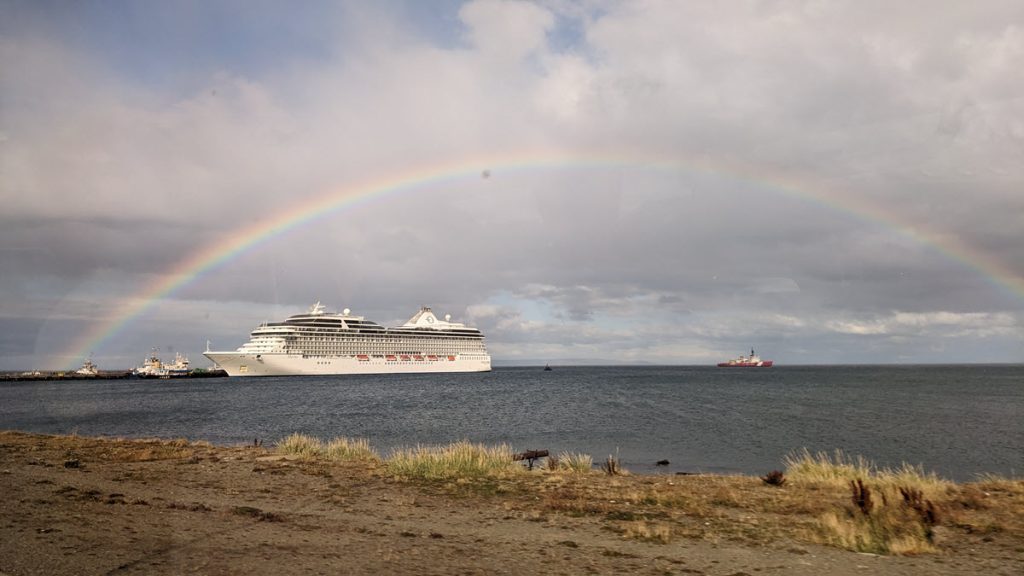Glacier Alley, Chilean Fjords
Mar 8, 2023
We left Ushuaia, Argentina around 4pm and had a picturesque sail through the Beagle Channel. The channel is a strait that extends for 150 miles in the Tierra de Fuego archipelago in the southern tip of South America. It connects the Atlantic Ocean with the Pacific Ocean. The strait was named for the ship (HMS Beagle) that Darwin sailed on with Fitzroy on their exploration voyage that began in 1831. Glacier Alley is in the Chilean Fjords.
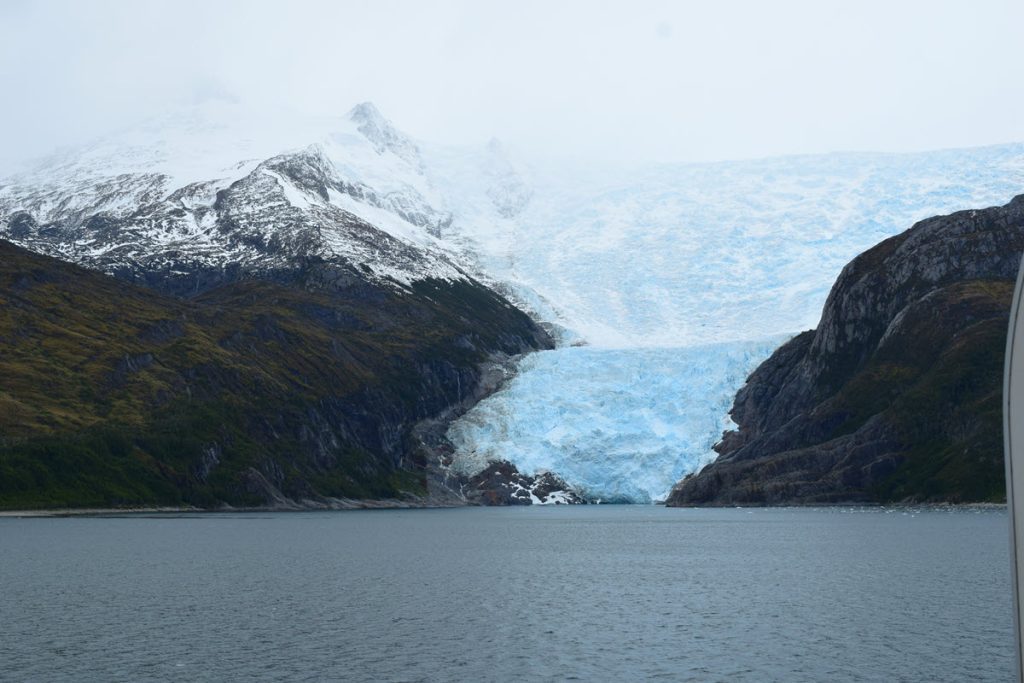
Glacier Alley is a short part of the Channel that contains 5 tidewater glaciers. Around 7pm, we saw the first of the five glaciers, all easily visible from the ship. We watched from our starboard stateroom while we drank wine and enjoyed room service appetizers. Even though it is late summer, it was quite cold as the sun went down. These blue glaciers are named for various European countries and are part of the Darwin Icefield – Holanda, Italia, Francia, Alemania and Romanche. We saw the last one just as the sun was setting. Just after the glacier alley, we crossed the border into Chilean waters.
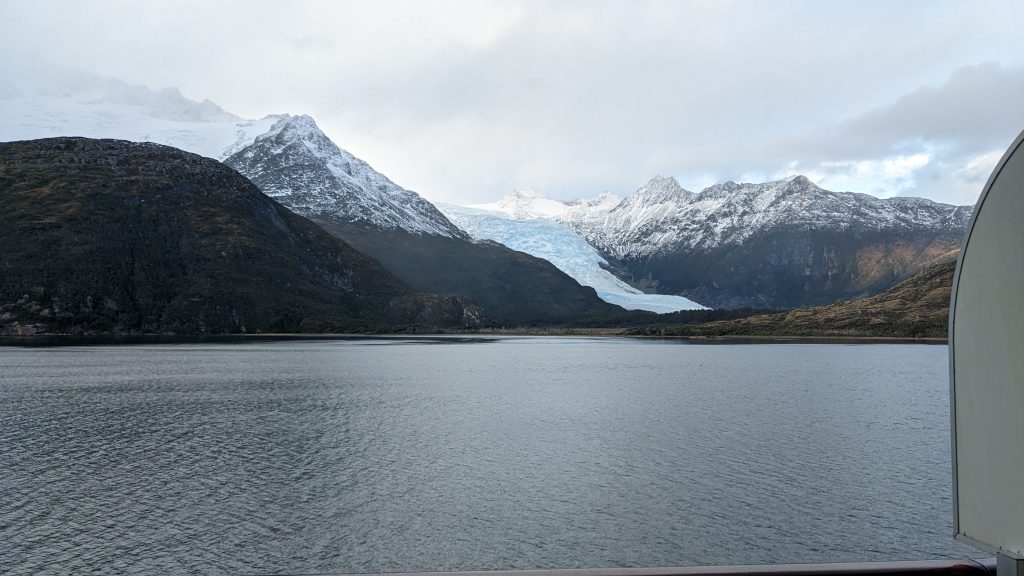
Just after the glacier alley, we crossed the border into Chilean waters. We sailed through the night in the Beagle Channel and then into the Straits of Magellan – such historic names!
Punta Arenas
We arrived in Punta Arenas around 11:00am. This Chilean town is located on the West coast of Patagonia in Chili, overlooking the Strait of Magellan. It is known as one of the world’s windiest cities. We were lucky to have good weather most of the day with sunshine, wind of course and just a few raindrops.
We went on a ship’s excursion to see Magellan Strait Park. By the time I started looking at excursions, maybe in November or December, many were already fully booked. Brenda and Craig took a tour called “Walk in the Past” and saw more of the town, the HMS Beagle ship replica and a natural history museum.
The first European to discover Patagonia was Fernao Magalhaes (Ferdinand Magellan), a Portugese born explorer. He was funded by the King of Spain to find a new through the newly discovered American continents. Starting in Europe they sailed through the Atlantic ocean on Sept 20 1519. On October 21, 1520 his flagship, the Trinidad, entered the strait that now bears his name. Thirty six days later they entered the Pacific Ocean. Magellan died before just one of his five ships made it back to Spain three years after they’d set out. Europeans didn’t return to settle Patagonia for another 250 years.
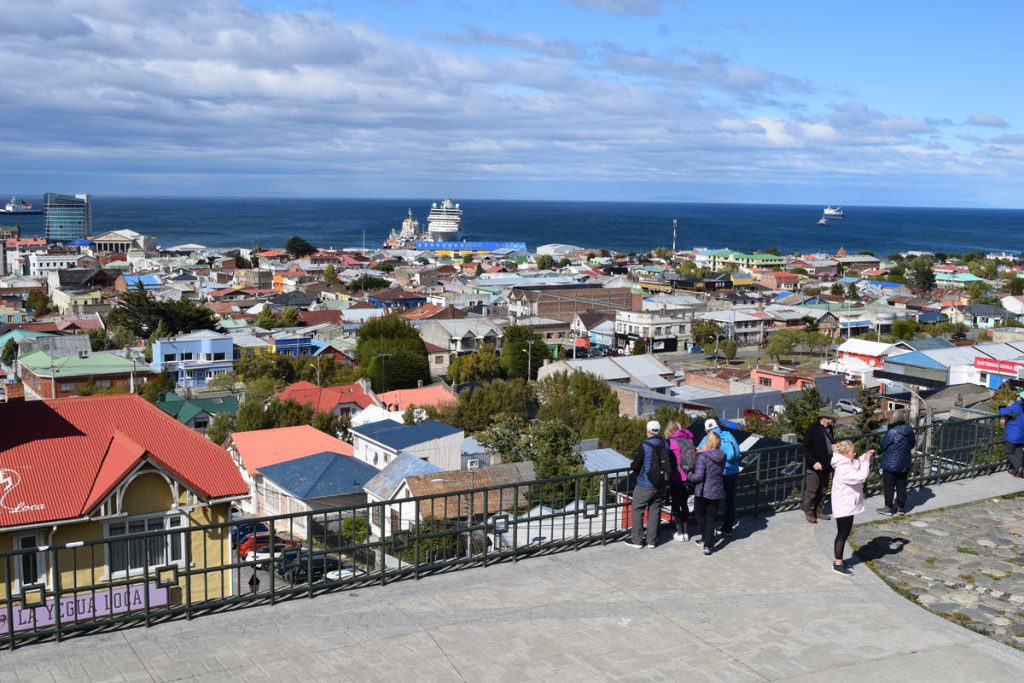
We would have liked to see more of the city but the tour we chose was a half day excursion to see a historical site about 45 minutes outside of town. We stopped first at a picturesque viewpoint called the Hill of the Cross in English (Cerro de la Cruz) that overlooks the town and the Strait of Magellan. In the far distance is the island of Tierra del Fuego which means Land of Fire. (Ushuaia is on the East side of the island in Argentina.)
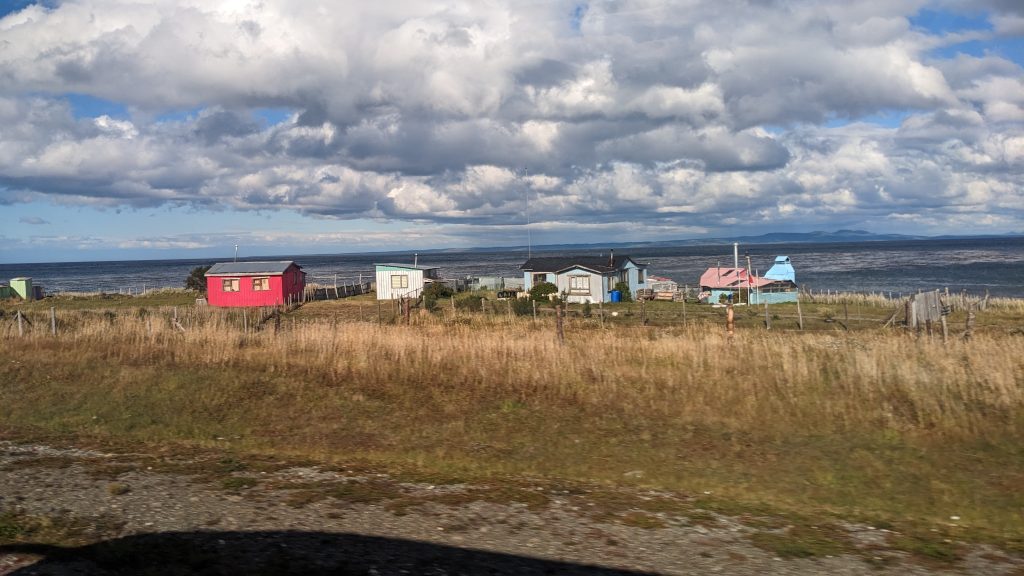
We drove along the strait’s coast for 62 kilometers, about 45 minutes. The terrain became quite rural as soon as we left the town with some farmland, abandoned ships, fishing boats on the hard, and waterfront shacks.
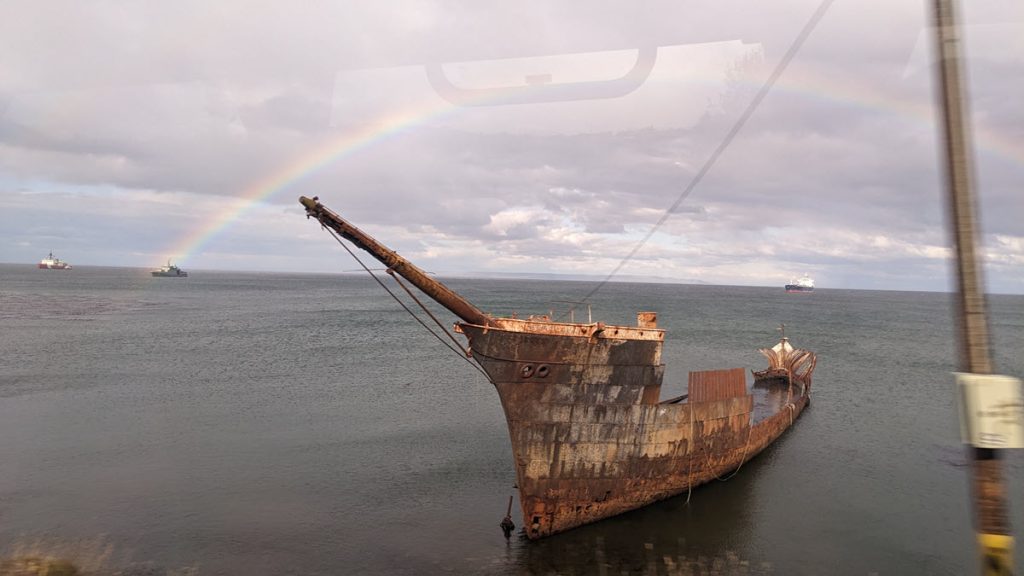
At the top of a promontory is Fort Bulnes, which was founded in 1843 by a group of explorers captained by Englishman John Williams in the service of Chile. Initially the intent was to establish a town at Fort Bulnes. However the harsh weather prevented attracting a large and stable population. As a result, after six years, the local governor founded Punta Arenas in the Sandy Point area in 1848. Once people had migrated there, military forces abandoned and destroyed the fort.
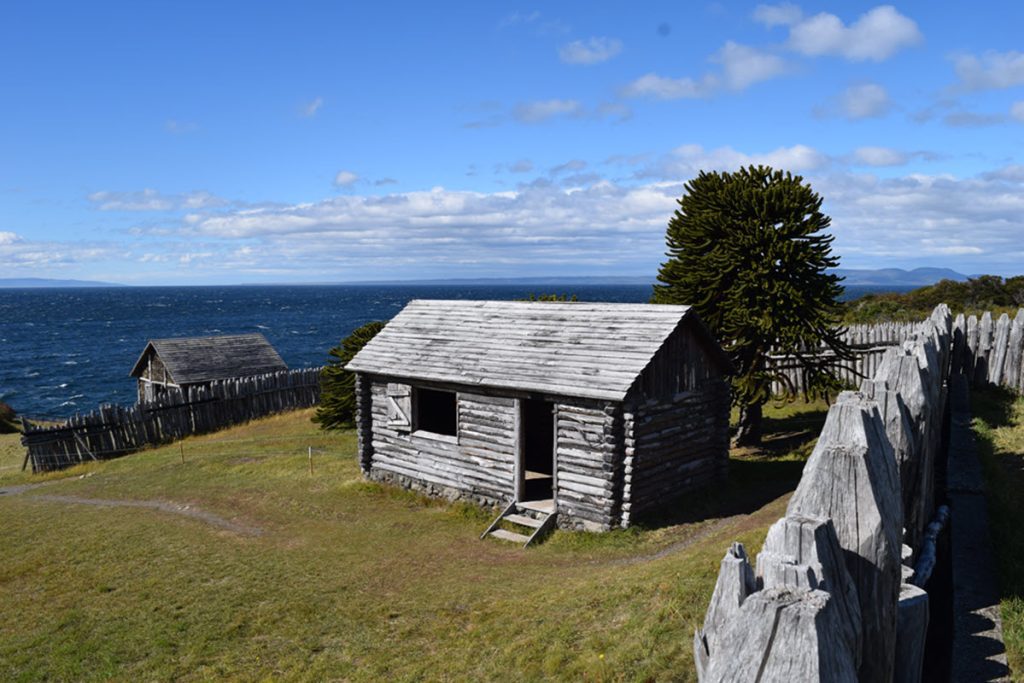
The town of Punta Arenas was originally intended to be a penal colony, much like Australia. Three years after the town was established in 1848, the prisoners revolted, executed the governor, captured two vistor’s ships, marooning their passengers and attempted to escape to Brazil. An American skipper of one of the captured boats was able to recapture the passengers who had gotten drunk on looted French cognac.
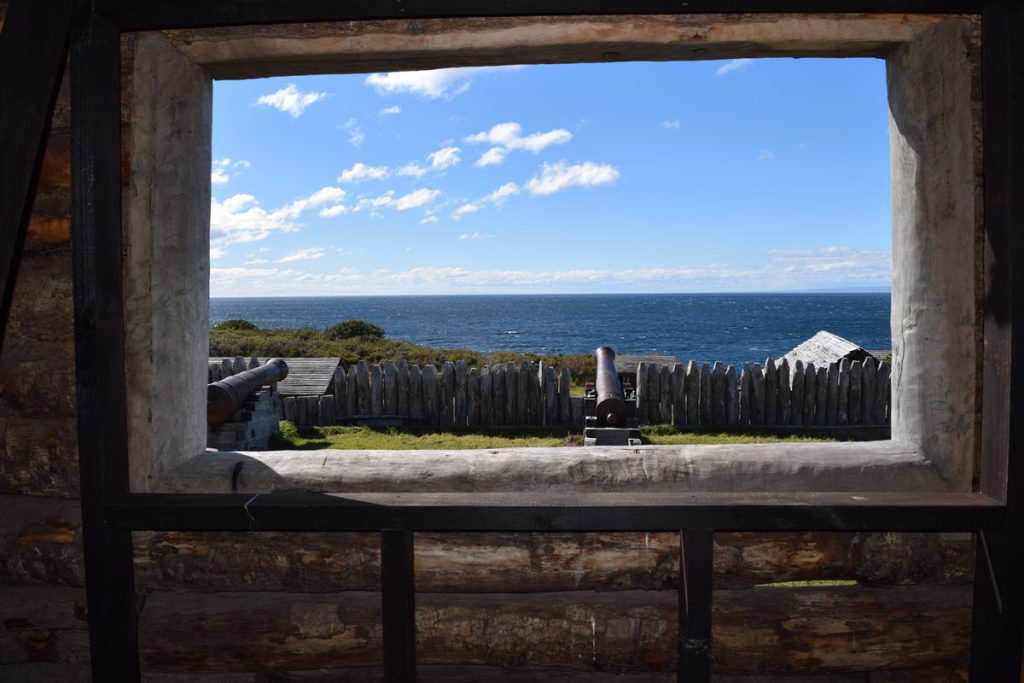
One hundred years later, in 1944, the fort was reconstructed using original plans, rough-hewn logs and replica cannons. It was a clear beautiful day to capture the 360 degree views. Very quiet, you can imagine the solitude of the first settlers who tried to build a life in these difficult terrain.
The half day tour dropped us back at the terminal in the late afternoon where a full rainbow hovered over our ship. We decided against further exploration of the town as Bill reminded me that it is always the “last mile” that triggers my leg pain. So back to the fairy tale world of the ship for two days at sea through the Chilean Fjords.
